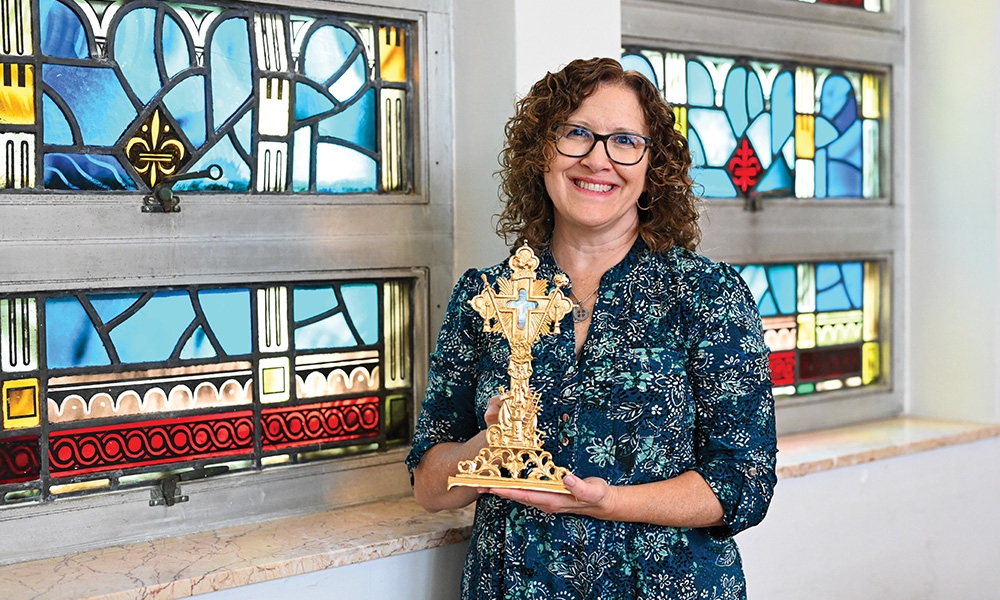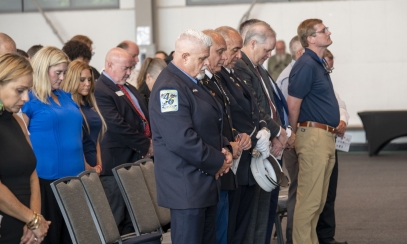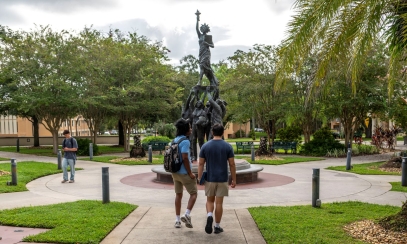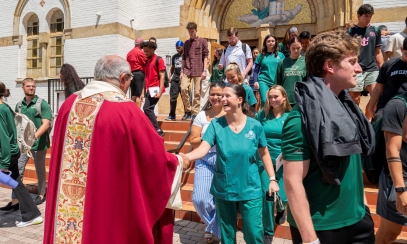
Connected to the saints: Sacred relics come to Mary Help of Christians Center
Getting your Trinity Audio player ready...Why do people visit the Holy Land or other sacred or historical sites? Why do they treasure family heirlooms?
Why do people visit the Holy Land or other sacred or historical sites? Why do they treasure family heirlooms?
Perhaps it’s because of our natural desire to be close to greatness or to those we love. Even if someone is no longer alive, we can feel connected to them through things that belonged to them or things they left behind, also known as relics.
The word “relic” comes from the Latin reliquiae, meaning “remains.” Sacred relics are physical objects that have a direct association with Our Lord or the saints, those who are in heaven and worthy of imitation.
Two years ago, Mary Help of Christians Center (MHC), in Tampa, received a large collection of relics, and it became my task to make them available for veneration. The Apostles’ Creed states that “we believe in the communion of the saints” and the Catechism of the Catholic Church states: “the Church … sustains the hope of believers by proposing the saints to them as models and intercessors.” (CCC 828)
As I worked with these precious relics, these tenets of our faith took on a whole new meaning. Their relics brought a physical closeness to the saints, as well as an emotional one. Our faith tells us the saints will intercede for us, so it is only natural to ask for the prayers of those who have “fought the good fight” and won.
There are over 700 relics at MHC, including a relic of the Precious Blood of Our Lord, a fragment of the True Cross, and a piece of the Crown of Thorns. There are also relics of Mary and Joseph, the apostles, and many other companions of Our Lord. The collection also includes relics of 26 doctors of the church, 65 popes, many saints you have never heard of, and many saints you know well.
One frequent visitor explained: "This is the impact MHC’s relics have had on me: they’ve enabled me to visit and form relationships with holy friends, or new acquaintances I’d like to get to know better, because the saints went through relatable life experiences with grace and opened themselves to God drawing them closer to Him… overall, the saints have become real companions to me in a way I never could have imagined.”
Relics fall into the category of sacramentals. How do they differ from sacraments? Sacraments give us sacramental grace; sacramentals make us more open to receiving that grace.
Other sacramentals include blessings, holy water, and blessed items such as rosaries, medals, or holy pictures. Another way to put it is that sacramentals, such as relics or the rosary, are powerful tools in our spiritual toolbox, and we could all benefit from them.
A live presentation about the relics is available upon request, and the church is open daily for prayer and veneration, in addition to the parish Masses.
We invite you to spend time in communion with the saints at Mary Help of Christians Center.
Visit us at mhcrelics.org for more information. Better still, visit in person or bring a group from your parish, school, or association.
The Parts of a Relic:
The small locket that houses the relic is called a “theca.” It has the name or names of the saint or saints on it. The back is sealed with string or wire and a wax imprint of the seal of a bishop, abbot, or postulator — these are the three authorities delegated by the Church to issue relics. With the theca is always a document that has the name and authority of the person issuing the relic. The seal of the document matches that of the theca. The document describes what is in the theca, for instance, “Ex ossibus” is from the bones, “Ex velo” is from the veil.
There are three different types of relics:
- First-Class Relics are items directly associated with the events of Christ’s life, or the physical remains of a saint.
- A Second-Class Relic is an item which was worn by a saint or that the saint owned or frequently used.
- A Third-Class Relic is an object that is touched to a first- or second-class relic.



